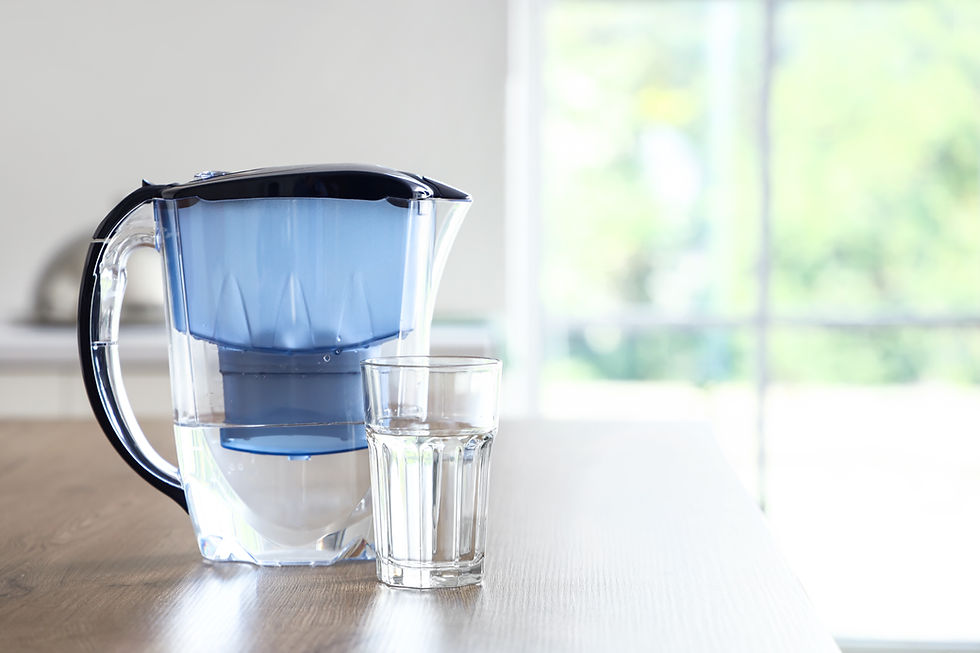How old water pipes affect drinking water quality
- Holmblad Water
- Mar 1, 2024
- 4 min read
Updated: Apr 1, 2024

Age isn't just a number for people; it also applies to our pipelines. The age of our pipelines can have a significant impact on our health and well-being, even though they are out of sight and often out of mind.
Across Europe, we're witnessing issues with old pipelines. While many lead pipes have been replaced in the EU over the last 50 years, the replaced iron pipes have gradually begun to accumulate sediment such as rust in the water supply lines. As these iron pipes corrode and deteriorate, rust and contaminants can infiltrate the system. The major issues with old pipes, in general, involve potential lead contamination in pipes from before 1990. In pipes after 1990, corrosion can compromise water quality by introducing iron, sediment, and other pollutants into the water. Additionally, rusty pipes can create an environmental breeding ground for harmful bacteria, affecting both the taste and safety of the water supply. This applies to the majority of pipelines in the EU.
Asbestos is another major concern with pipelines from before 1980. Even in a wealthy, modern, but small country like Denmark, there are still 1100 kilometers of asbestos pipelines in use in 2024. In many other countries, the proportion of asbestos-containing cement pipes would be even higher. Old pipelines also provide favorable conditions for the growth of bacteria, fungi, and other microorganisms. So even if your local water utility is one of the few that has upgraded to a modern, high-efficiency filtration system, the water still has to travel through miles of old pipes.
The drinking water leaving the water treatment plant may theoretically be clean and healthy, but it ends up running through pipes laid under the city's streets and houses several decades ago before reaching your glass.
During warmer periods, there may also be an increased risk of bacterial growth, which can lead to diseases such as Legionnaires' disease. The same goes for water that has been stagnant in hot water tanks for showers. The accumulation of rust, sediment, and other materials in the pipes can also affect the taste and odor of the water, making it unpleasant to drink.
According to a report from the Spanish National Association of Water Supply and Sanitation Companies (AEAS), the average age of Spain's water supply network is over 40 years. The report also indicates significant infrastructure deficiencies in many areas of Spain, including leaks, inadequate water pressure, and outdated pipelines. Efforts are underway to improve water quality and supply by modernizing and upgrading Spain's water supply infrastructure. There is an effort to replace old pipes with more modern plastic pipes, which will solve many of the problems with old pipes. However, this process takes time and is economically demanding. A complete upgrade of pipelines throughout the EU will take decades.
Ironically, microorganisms may also prove to be an even greater problem in the future. Plastic will always release small amounts of organic material (residues of monomers and additives) that bacteria can thrive on. Therefore, there is currently no future-proof solution for a safe transport route from the water treatment plant to your kitchen.
Water is treated differently throughout the EU. In Denmark, groundwater is usually filtered through a sand filter; in Spain, chlorine is added; and in France, membrane filtration and chlorine are often used. Regardless of the treatment method, the water has to go through kilometers of similar pipe systems before reaching your glass. Filtering your water today is a cheap and highly effective way to ensure clean and healthy drinking water in your home. While buying bottled water is an option, it is not a sustainable or responsible solution, especially considering the huge numbers of plastic bottles expected to be sold worldwide in 2024, with only a small fraction being properly and effectively recycled.
There are many water filter solutions on the market today for home use. You can find basic solutions like pitcher and faucet-mounted filters that can address certain issues. There are also many expensive solutions that promise more than they can deliver. The market for water filter solutions can be confusing, and it can be difficult to know what works and what is nonsense.
When it comes to effectively filtering out lead, rust, heavy metals, chlorine, chlorine byproducts, PFAS, pesticides, microplastics, and other contaminants from old pipes, there are two well-researched and tested solutions: reverse osmosis and coconut-based activated carbon filters. We recommend the latter, and not without reason. Reverse osmosis is a more complex installation with higher maintenance requirements, higher cost, and operating expenses. Additionally, reverse osmosis filters out all natural minerals from the water, and up to 8 liters of water are wasted to produce 1 liter of filtered water. Reverse osmosis also takes up significantly more space under the sink. For these reasons, we offer only the more sustainable solution that does not waste water, does not require electricity, is cheaper and easier to maintain, and takes up less space. Coconut-based activated carbon filter is also completely climate-neutral, as coconut is a sustainable source of raw material.



Comments